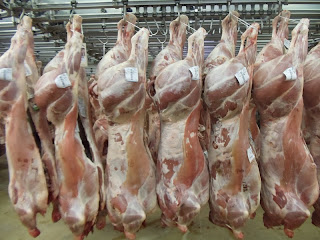I felt better after my croissant catastrophe once I had my dose of spaghetti and parmesan with olive oil (my ultimate comfort food) and a viewing of Pride & Prejudice. I was ready to get over it and face the tropical elements once again. This time, I blasted my air conditioning, armed myself with valor and positivism, and set out to make a classic French apple tart. A tarte aux pommes.
A tarte aux pommes consists of a sweet pastry dough crust, apple filling, and apple slices for decoration. I'll cut to the chase. It was a success! Even though this recipe involves butter, and mixing it at just the right temperature and in just the right way, the elements seemed to cut me some slack, and bingo! This was the result:
A tarte aux pommes consists of a sweet pastry dough crust, apple filling, and apple slices for decoration. I'll cut to the chase. It was a success! Even though this recipe involves butter, and mixing it at just the right temperature and in just the right way, the elements seemed to cut me some slack, and bingo! This was the result:
 |
| yesterday's french apple tart |
Here's the recipe. Try it for your Christmas meal, and let me know how it goes.
French apple tart (adapted from a Le Cordon Bleu Paris recipe)
Sweet short pastry
200g flour
100g butter (cold)
4g salt
20g sugar
1 tsp water
1 egg
vanilla
Apple filling
3 apples (Golden Delicious work best)
30g butter
30g sugar
30ml water
vanilla
cinnamon
Decoration/topping
3 apples (Golden Delicious) for decoration/top of tart
butter
brown sugar
Preheat your oven to 180 degrees celsius (350 degrees fahrenheit). Prepare a baking sheet covered with parchment paper, and butter a circular tart mold.
In a bowl, add flour, salt, butter (cold), water, egg, vanilla, and sugar. Make the movement with your fingers as if you were counting bills to mix the ingredients together. Once mixed, top your workspace with a bit of flour, dump the mixture on the surface, and use the heal of your hand to press and push the dough in order to mix the ingredients further. Be careful not to mix too much, or else the butter will start to ooze. If you feel that your dough is too warm, put it in the fridge for a few minutes before rolling out the dough.
Working quickly, use a rolling pin to roll out the dough until it is about 3mm thick. Make sure your dough is at least 1-2 cm larger than the circumference of the tart mold. Then use your rolling pin to place your flattened dough on it, and carefully roll it onto the tart mold. With your thumb and index finger, press the rim of the tart mold to ensure that the dough is properly attached to the mold. Leave a bit of dough on top of the tart mold, and use your rolling pin to roll over the lined tart mold to trim the excess dough. Place the lined tart mold into the fridge (or freezer if you're in the tropics)!
You'll need at least 2 1/2 - 3 apples for the tart filling. Roughly chop these apples and saute them in a pan with butter, sugar, water, vanilla, and cinnamon. Saute until golden brown.
Place your filling into the tart base, creating a mound in the center.
Slice your decoration apples in moon shapes and create a design to top your tart. The photo above shows a circular pattern, but placing the apple slices in diagonal lines also works well.
Top the tart with bits of butter and brown sugar, and place in the oven for 35 minutes or until golden brown.
May the elements work with you on this one!




























































